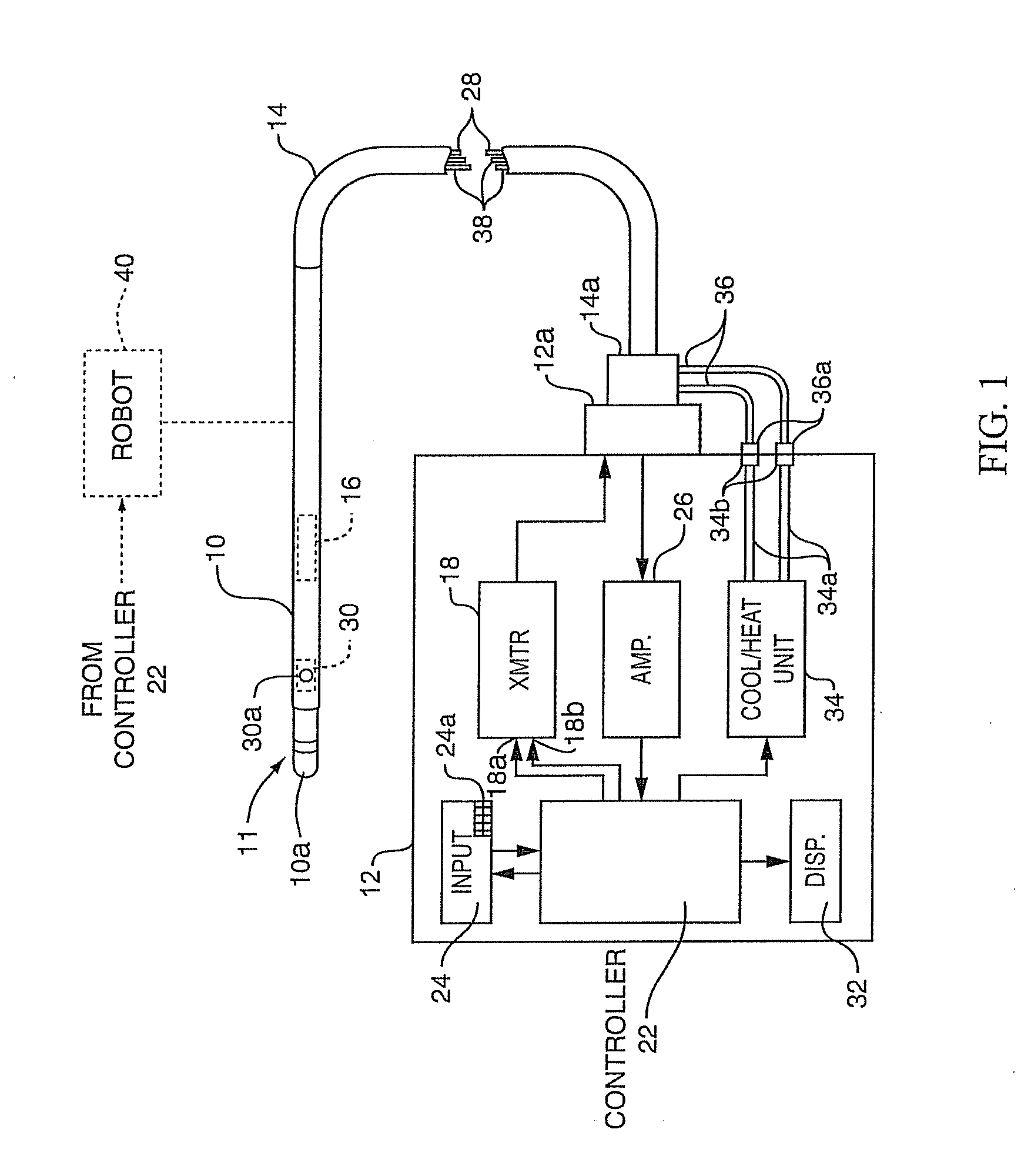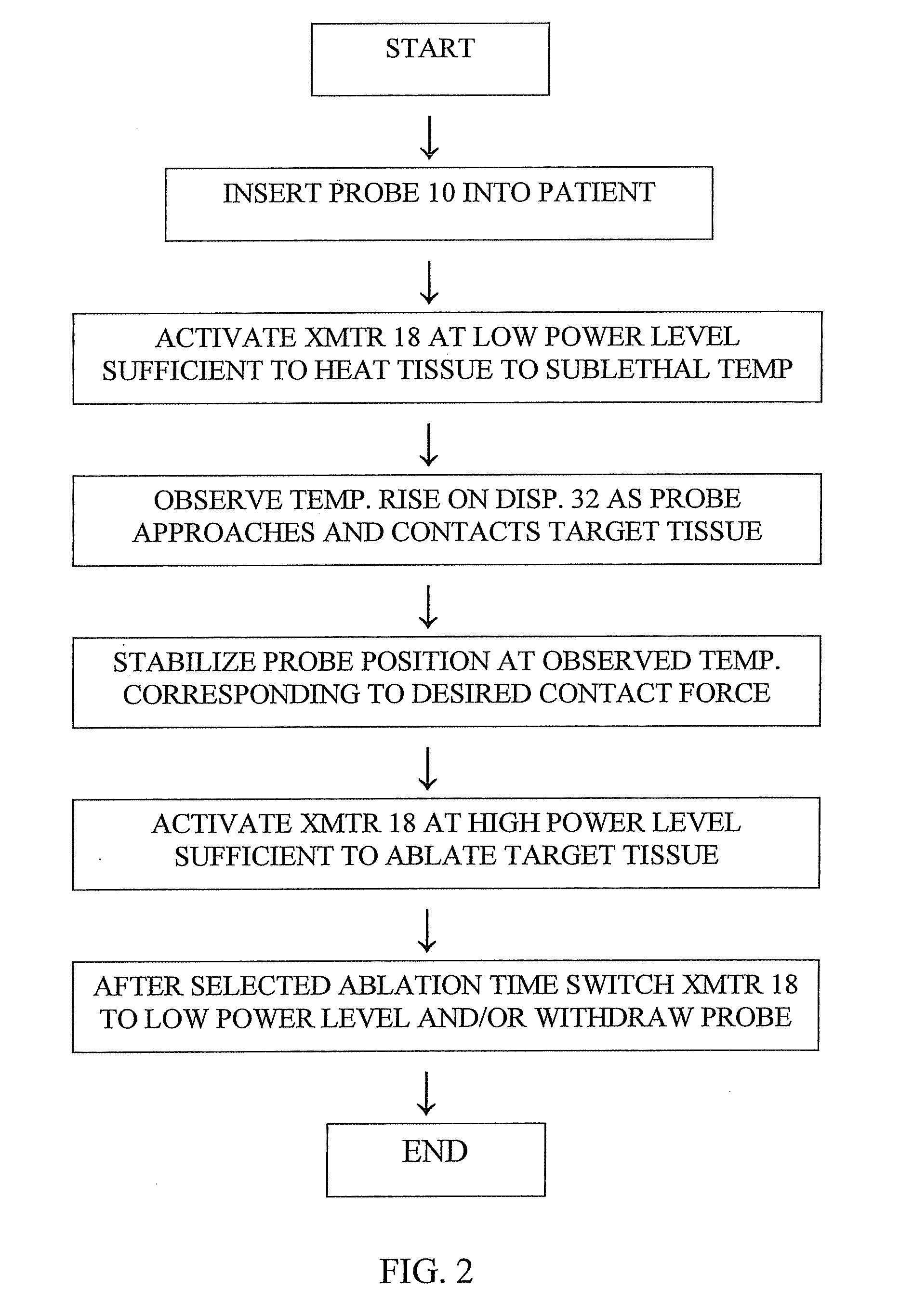Method and apparatus for measuring catheter contact force during a medical procedure
- Summary
- Abstract
- Description
- Claims
- Application Information
AI Technical Summary
Benefits of technology
Problems solved by technology
Method used
Image
Examples
working example 1
[0052]A test was performed to determine if there is a power level which keeps the temperature rise in tissue below 5° C. at full contact but causes enough of a temperature rise in the radiometer output signal or reading to accurately determine the contact force applied to the tissue.
[0053]Testing was performed with the delivery of low power, i.e. 0, 1, 2 and 4 watts, to the antenna in the catheter and the catheter was attached to a force sensor. The catheter tip was positioned 2-3 mm above the target tissue and then moved slowly until it reached the tissue and then moved into the tissue.
[0054]FIG. 3 graphs a typical “2 watt” run using our method, recording the force exerted by the probe on the tissue and the radiometer reading while 2 watts of power were applied. As shown in FIG. 3, the radiometer reading indicated the beginning of a temperature rise as the probe touched the tissue at time 50 seconds and the temperature rise clearly tracked the increase in force exerted on the tissu...
working example 2
[0056]A second test was performed to determine if there is a high power level but short time which keeps the temperature rise in tissue below 5° C. at full contact, but causes enough of a temperature rise in the radiometer to accurately determine the contact force applied to the tissue.
[0057]Testing was performed with the delivery of high power, i.e. 30 watts, for a short period of time, i.e. 10 and 5 seconds, to the antenna in the catheter and the catheter was attached to a force sensor. The catheter tip was positioned 2-3 mm above the target tissue and then moved slowly until it reached the tissue and then moved into the tissue. The antenna was stopped when the load on the tissue was 5 grams and then high power was pulsed on for 10 seconds. This was repeated for every 5 gram increment until 50 grams, which is thought to correspond to the maximum allowable force which should be exerted on the heart tissue.
[0058]FIG. 5 shows an example of the temperature rise in the radiometer durin...
PUM
 Login to View More
Login to View More Abstract
Description
Claims
Application Information
 Login to View More
Login to View More - R&D
- Intellectual Property
- Life Sciences
- Materials
- Tech Scout
- Unparalleled Data Quality
- Higher Quality Content
- 60% Fewer Hallucinations
Browse by: Latest US Patents, China's latest patents, Technical Efficacy Thesaurus, Application Domain, Technology Topic, Popular Technical Reports.
© 2025 PatSnap. All rights reserved.Legal|Privacy policy|Modern Slavery Act Transparency Statement|Sitemap|About US| Contact US: help@patsnap.com



